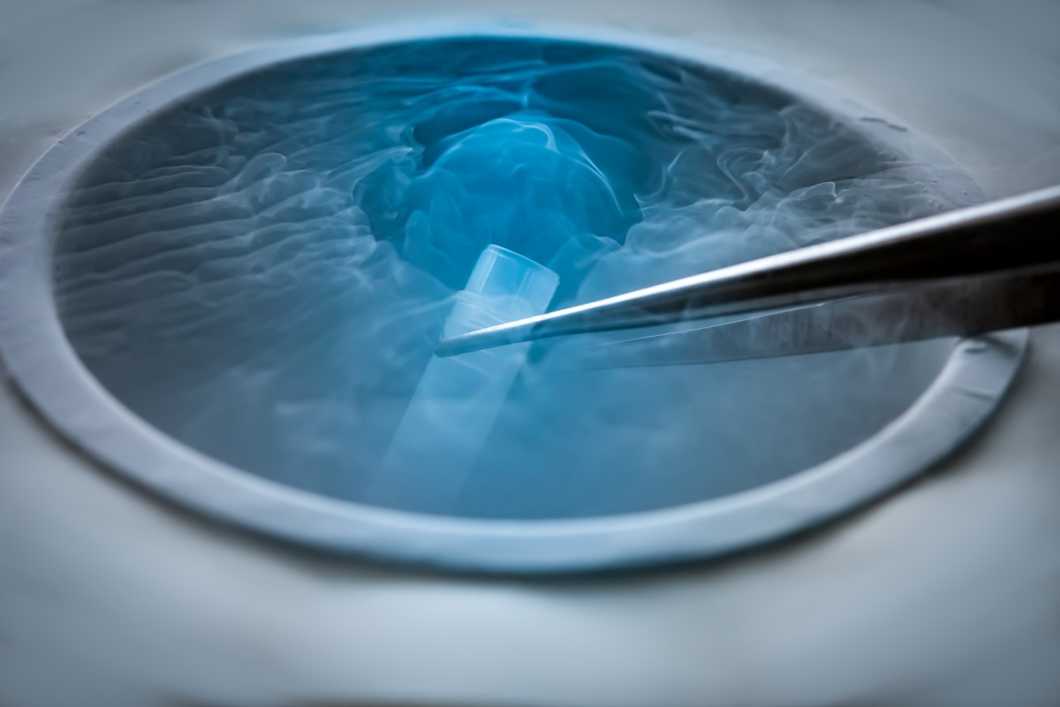Cryogenic electron microscopy
Cryogenic electron microscopy (cryo-EM) combines pretreatment by instant freezing with TEM or SEM to enable the analysis of fragile biological samples otherwise too susceptible to damage from the electron beam. Cryo-EM is an increasingly popular method in structural biology for determining the structure of macromolecules.

- Fast turnaround times
- Personal service from method experts
- Competitive prices
- Result accuracy guarantee
What is cryo-EM used for?
Cryo-EM is primarily used to image biological molecules that are too large and complex to analyze through more conventional means, such as NMR and XRD. Through the use of reconstruction software and a series of 2D images taken at different angles, cryo-EM can be used to create 3D models of various types of biological materials, such as proteins, viruses, enzymes, and bacteria. This gives cryo-EM applications in biological analysis, medical research, and drug development.
How does cryogenic electron microscopy work?
Cryo-EM begins by flash-freezing the sample using liquid ethane, which has itself been prepared using liquid nitrogen. This causes the sample to freeze so quickly that no ice crystals can form, which is crucial as they would inhibit the results. The molecules are also preserved in their natural conformations, which allows them to be readily analyzed and imaged using electron microscopy.
Although the term cryo-EM refers to cryogenic electron microscopy more generally, it is almost always used to mean cryo-TEM, i.e. the combination of flash-freezing with transmission electron microscopy. Cryo-SEM is also possible, but far less common.
Suitable samples and sample preparation
A wide variety of molecules can be analyzed using cryo-EM, provided that they are in solutions suitable for flash-freezing. The molecule size should also be relatively large, generally >150 kDa, or 5–300 nm in diameter.
Cryo-TEM vs. TEM
Transmission electron microscopy (TEM) is a versatile technique that forms the backbone of cryo-TEM. Traditional TEM is conducted in a vacuum to remove contaminants in the air. In most cases, this approach works, but some sample types, including volatile substances and sensitive biomolecules, are not stable in a vacuum or are easily damaged by the high-energy electron beam. In these situations, Cryo-TEM offers an alternative solution more suitable for such delicate or complicated sample types.
Cryo-EM vs. NMR
Nuclear magnetic resonance (NMR) spectroscopy is a standard analysis technique used in biological and chemical analysis for comprehensive structure determination. While it is highly useful when analyzing small biomolecules, NMR analysis becomes significantly more difficult the larger the chemical species becomes. This makes large macromolecules, like proteins, better suited for cryo-EM analysis.
Need cryo-EM analyses?
Measurlabs offers laboratory testing with cryo-EM. Whether it’s just a dozen of samples or a large series, we offer competitive pricing and deliver reliable results quickly. Reach out to us using the form below to request a quote and we will get back to you latest the next business day.
Suitable sample matrices
- Proteins
- Enzymes
- Macromolecules
- Bacteria
- Volatile materials
Ideal uses of Cryo-EM
- Mapping protein structures
- Mapping enzyme active sites
- Understanding protein synthesis
- Researching bacteria cell structures
- Surface mapping and model creation
Ask for an offer
Fill in the form, and we'll reply in one business day.
Have questions or need help? Email us at info@measurlabs.com or call our sales team.
Frequently asked questions
The rapid cooling process can have adverse effects on certain sample types. Furthermore, the thickness of the sample and the relative orientations of the molecules inside it can introduce errors, which may mean that multiple samples have to be prepared for high-quality results to be obtained.
The resolution of Cryo-EM is relatively low, but more advanced equipment is continuously being developed to improve this.
Measurlabs offers a variety of laboratory analyses for product developers and quality managers. We perform some of the analyses in our own lab, but mostly we outsource them to carefully selected partner laboratories. This way we can send each sample to the lab that is best suited for the purpose, and offer high-quality analyses with more than a thousand different methods to our clients.
When you contact us through our contact form or by email, one of our specialists will take ownership of your case and answer your query. You get an offer with all the necessary details about the analysis, and can send your samples to the indicated address. We will then take care of sending your samples to the correct laboratories and write a clear report on the results for you.
Samples are usually delivered to our laboratory via courier. Contact us for further details before sending samples.